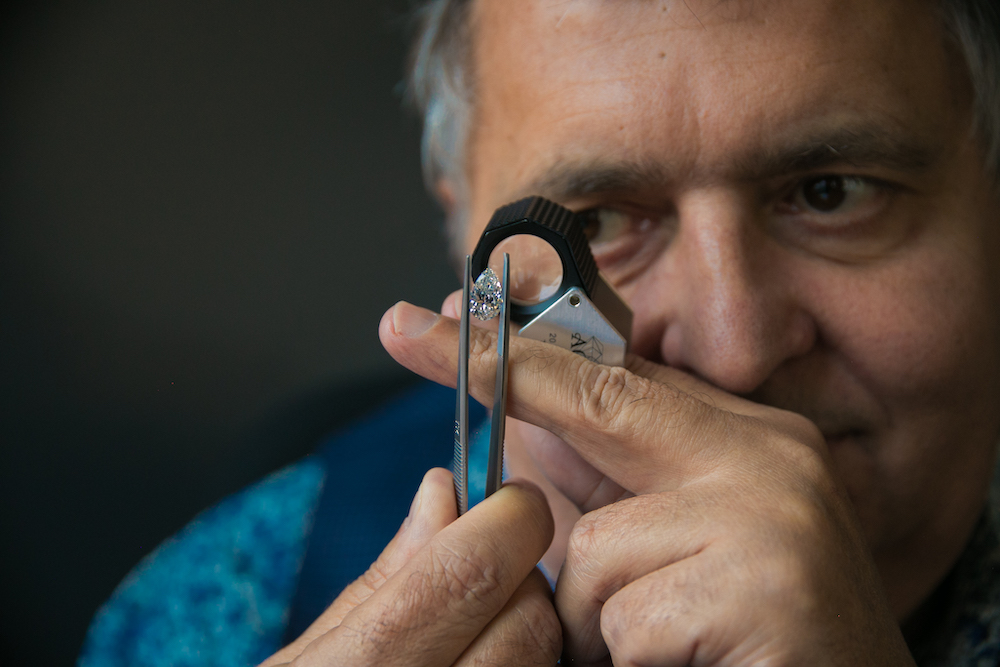This year, the high jewelry collections have once again and very ostensibly given top billing to fancy cut diamonds. These diamond cuts require mastery and dexterity and are the very essence of the high jewelry collections. To understand their subtlety, we asked Stephan Wolzok, CEO of Rubel & Ménasché, to share his experience as a diamond expert and help us discover all the facets of fancy cut diamonds.
Stephan Wolzok, for novices, what defines a fancy cut diamond?
A fancy cut diamond is very simply anything that is not round. You can then separate these diamonds into two categories of cut: the Brilliant Cuts, which are the pears, marquises, hearts, cushions, etc.; and the Step Cuts, which are the emerald cuts, square cuts, baguettes, tapers, etc.
In your opinion, what is it that determines the advantages or the beauty of these fancy cut diamonds? Has there been a recent enthusiasm for this kind of stone?
 It depends on each stone and its shape, and it is also a question of taste. Not everybody likes the strict shapes, others prefer softer shapes; but for those who like fancy cut diamonds, everyone can find a model that works for them.
It depends on each stone and its shape, and it is also a question of taste. Not everybody likes the strict shapes, others prefer softer shapes; but for those who like fancy cut diamonds, everyone can find a model that works for them.
What is certain is that the use of fancy cut diamonds is often a sign of high jewelry. To use baguettes, for example, you need much more mastery and knowledge of jewelry setting than for setting a more traditional, round stone. And this is without taking into account, for example, that combining baguettes with pave settings lets you play with the contrasts and bring much more light into your piece of high jewelry. With fancy cut diamonds, you’re creating volume, you’re adding visual eye-catching points depending on the angle from which you look at the jewel, and you’re demonstrating your expertise.
At Rubel & Ménasché, do you especially like fancy cut diamonds?
Yes, insofar as, in my opinion, these cuts enable you to create very fine pieces and to push the graphic creation, jewelry-making and estheticism as far as possible. When you mix the shapes, marquises, baguettes and pears, you create a landscape. You take the imagination even further and elicit emotions, you inspire reverie. Each little detail, albeit barely perceptible, brings even more magic.
Many of the Maisons on Place Vendôme stand out in this field and thus show exceptional high jewelry know-how.
For you as a diamantaire, what does it mean to source high-jewelry-quality fancy cut diamonds for your clients?
It’s undeniably a challenge and it’s certainly not taking the easy road… but that’s how we operate!
In the quality that we offer, these stones are indeed very hard to find. These cuts are less established than the rounds. Few people have the taste or capacity for cutting stones in such a harmonious way as that required by fancy cut diamonds. They must be beautiful to look at, but an expert hand and much talent are necessary to succeed in this. We have to work very closely with our partners, we have to explain very precisely what we expect. So this requires a very great commitment and investment on our part. Also, when the cutters in our workshop recut the stones, to plan or bespokely, they must also demonstrate mastery and finesse to achieve perfect harmony and give the poetry of the piece its due.
At Rubel & Ménasché, we’ve set ourselves the new challenge of making fancy cut diamonds more accessible. These stones represent a significant competitive advantage for the Maisons, insofar as they enormously open up creative possibilities. They are therefore a very promising differentiation and personalization tool and they have their rightful place in the jewelry range. At Rubel & Ménasché, we have the resources—in terms of equipment, CAO, R&D and the skills of our teams—to offer high volumes of fancy cut diamonds. We strongly believe that fancy cut diamonds are not only reserved for high jewelry but can also be part of standard pieces of jewelry.
Source Rubel & Ménasché
Photo © Van Cleef & Arpels.

